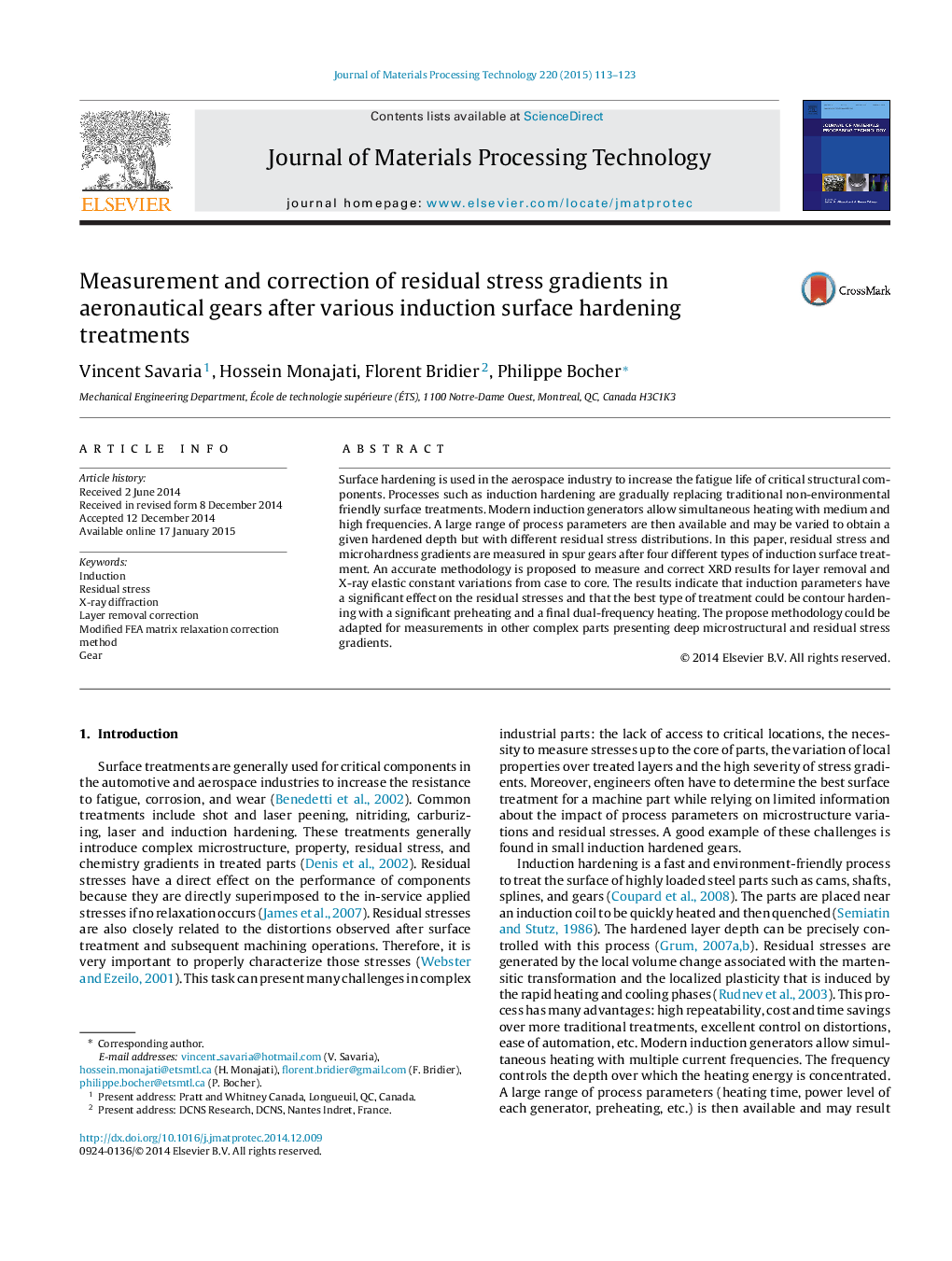| Article ID | Journal | Published Year | Pages | File Type |
|---|---|---|---|---|
| 792964 | Journal of Materials Processing Technology | 2015 | 11 Pages |
•Residual stress and hardness gradients were measured in induction hardened gears.•Measurements are corrected for layer removal and X-ray elastic constant variations.•Contour hardening produces the most favorable residual stress distribution.•Through hardening is associated with near-surface tension in the hardened layer.•Two treatments with the same case depth can present different residual stresses.
Surface hardening is used in the aerospace industry to increase the fatigue life of critical structural components. Processes such as induction hardening are gradually replacing traditional non-environmental friendly surface treatments. Modern induction generators allow simultaneous heating with medium and high frequencies. A large range of process parameters are then available and may be varied to obtain a given hardened depth but with different residual stress distributions. In this paper, residual stress and microhardness gradients are measured in spur gears after four different types of induction surface treatment. An accurate methodology is proposed to measure and correct XRD results for layer removal and X-ray elastic constant variations from case to core. The results indicate that induction parameters have a significant effect on the residual stresses and that the best type of treatment could be contour hardening with a significant preheating and a final dual-frequency heating. The propose methodology could be adapted for measurements in other complex parts presenting deep microstructural and residual stress gradients.
